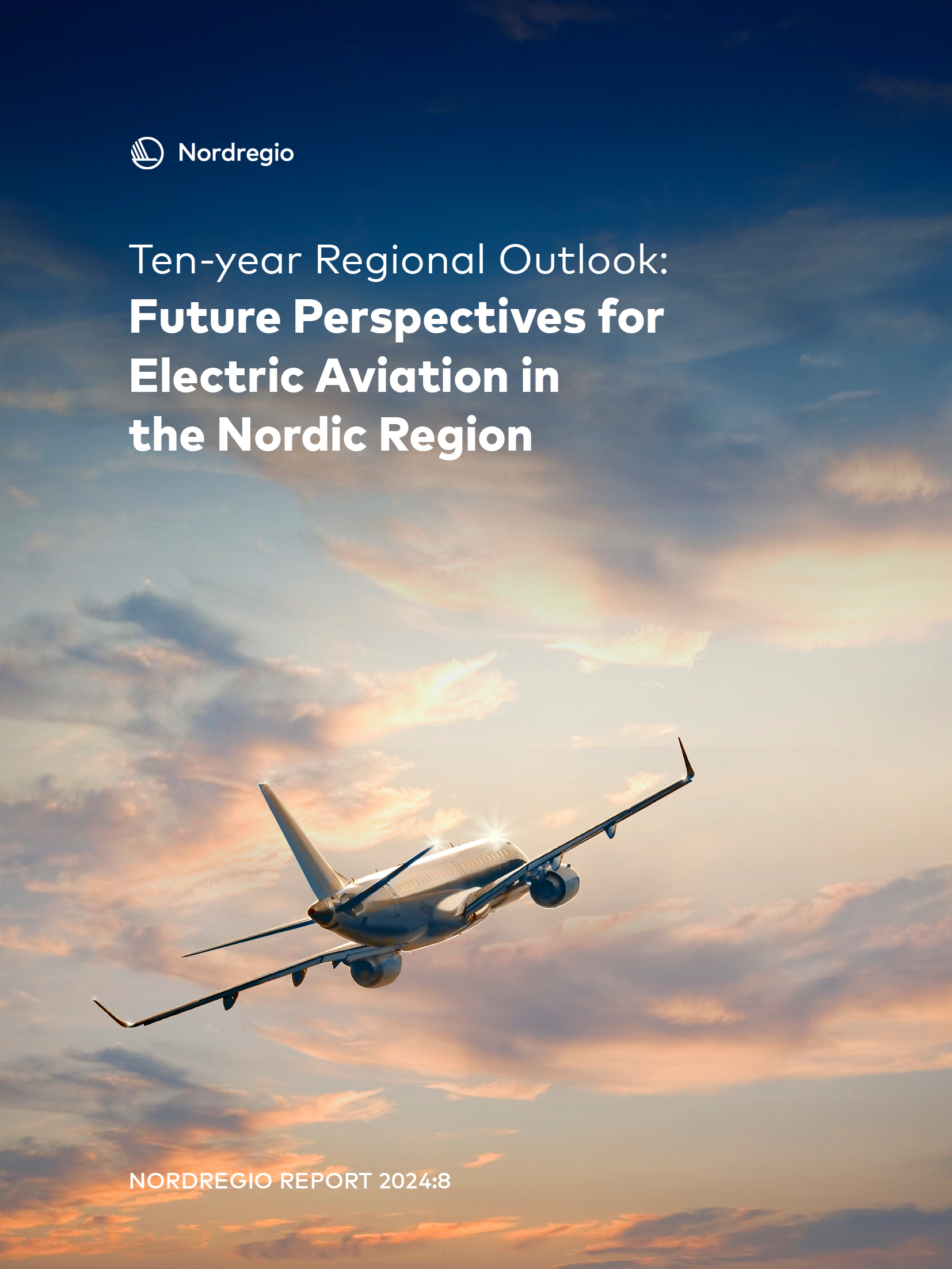Electric aviation has gained momentum in the Nordic Region in recent years. Given its unique geographical features and strong commitment to climate-neutral transport, the Nordic Region represents an ideal testing ground for electric aviation. In five to ten years from now, electric aviation has the potential to become reality, so it is crucial to explore which factors may affect its implementation and how regional development may be impacted.
Report from the “Electric Aviation and the Effects on the Nordic Region” project presents a ten-year future scenario for electric aviation in the Nordic Region. In this report, we explore future scenarios for five selected Nordic routes and identify the key driving forces behind that transformative shift, as well as the positive and negative impacts of electric aviation. The scenarios were developed through focus group discussions conducted with key stakeholders from each of the five Nordic countries (Denmark, Finland, Iceland, Norway and Sweden).
The main findings of the study show that electric aviation is generally perceived positively in the various Nordic countries. However, there are also certain contextual differences relating to whether electric aviation is viewed as a pathway to achieving climate targets and removing emissions, stimulating regional development and accessibility of remote areas, or as a new travel option compared to conventional flights.
Even though the general attitude towards electric aviation seems to be positive, scepticism and questions regarding the social acceptance of the new technology emerged, as well as the uncertainty around who will be the investors to kick-off the new technology. Furthermore, the future scenarios suggest that a high level of support from local and national governing bodies is required in order to make electric aviation a viable air transport mode in the Nordic region.
The insights of this report are intended both to inform decision-makers and to provide nuanced observations from each Nordic country and explore future pathways towards a sustainable and more integrated Nordic Region in line with the 2030 vision of the Nordic Council of Ministers.












